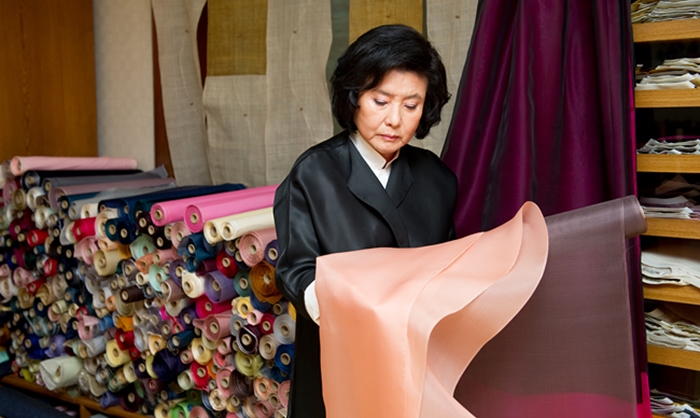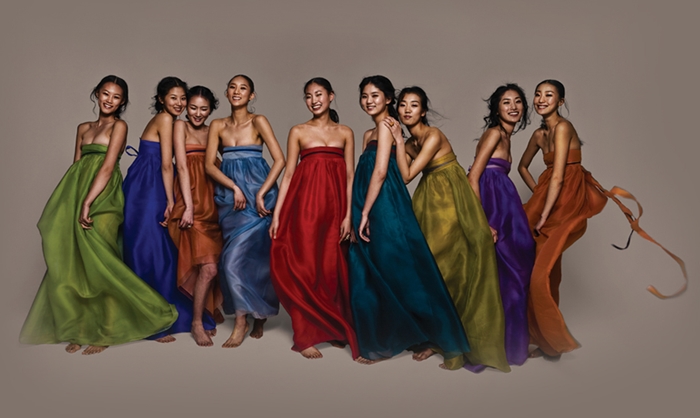-
 Korea.net's 24-hour YouTube channel
Korea.net's 24-hour YouTube channel- NEWS FOCUS
- ABOUT KOREA
- EVENTS
- RESOURCES
- GOVERNMENT
- ABOUT US

Hanbok designer Lee Young-hee, a pioneer of the modernization and globalization of traditional Hanbok attire, passes away at the age of 82 on May 17.
By Kang Gahui and Sohn JiAe
Photos = Lee Young-hee’s Facebook
Hanbok designer Lee Young-hee, who dedicated her life to the modernization and globalization of traditional Hanbok attire, passed away on May 17. She was 82-years-old.
Lee, often called a pioneer of modernized Hanbok, followed after the late Hanbok researcher and scholar Seok Ju-seon who stuck to the philosophy of, “Clothes must change according to the times.” Lee not only tried to pass on the traditions of Hanbok to the next generations, but also led efforts to widen the base of the traditional clothes.
Rounding out her career, Lee took part in more than 400 fashion shows on the global stage, for example, at the Carnegie Hall in New York in 2000, in Pyeongyang in 2001, at the Smithsonian Institution in Washington, D.C., where 16 of her designs were on display in 2007, and on Dokdo Island in 2011. She also designed traditional overcoats in Hanbok, known as durumagi (두루마기), for global leaders at the 2005 APEC Economic Leaders’ Meeting in Busan, and, also, for leaders at the opening ceremony for the PyeongChang 2018 Olympic Winter Games.

Lee Young-hee’s Hanbok designs, called the ‘Clothes of Wind,’ are beautifully captured in this well-known photo by Kim Jung-man.
One of Lee’s signature works is “Clothes of Wind" (바람의 옷) which thrust her into the global limelight after it was revealed to the public at the prêt-à-porter show in Paris in 1993. The dresses are all without their upper jackets, called jeogori (저고리).
Although the design garnered rave reviews across France, like, “It has the most modern, and at the same time, the most Korean of looks,” and, “It’s a combination of freedom and elegance as if it embraces wind all over,” it was denounced here at home as “an ambiguous garment of no nationality and no traditionalism.”
As the Korean government started in 2013 to allow tourists to enter the royal palaces in Seoul for free only when they’re dressed in Hanbok, this raised the question about whether casual, modernized Hanbok matches the criteria and definition of "genuine Hanbok." Some people argued that the identity of Hanbok should be kept unchanged, while others voiced the need to develop and change the traditional form of attire in a way to befit a modern age.
Lee belonged to the latter category. She focused on developing new designs and new materials, for example, a Hanbok-inspired dress and a durumagi-inspired jacket. She once spoke about one of her works by saying that, “To make Hanbok wearable on a daily basis, I needed to remove the unnecessary frills and I did it first with the tab on the jeogori jacket.”
Should we keep Hanbok as it was in the past, or should we transform it with modern touches? No matter which side dictates your style of Hanbok, we are all part of the process to make the nation’s costume both beautiful and functional.
What’s more important to know is that we’ve just lost a person who contributed wholeheartedly to spreading the beauty of Hanbok around the world and also to making the word "Hanbok" a proper noun in the dictionaries of many languages.
kgh89@korea.kr
Most popular
- First hearing-impaired K-pop act hopes for 'barrier-free world'
- Expats could account for 7% of population in 20 years: report
- 'Mad Max' director impressed by 'cinema-literate' Korean viewers
- Show in Italy to present 'thought-filled' Korean craftworks
- Romanian presidential couple visits national cemetery













